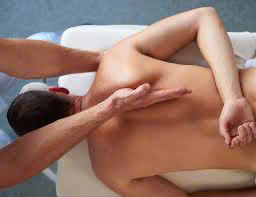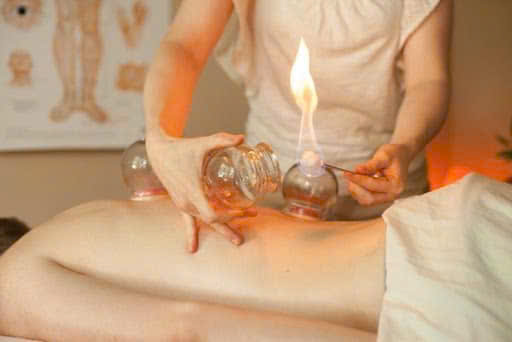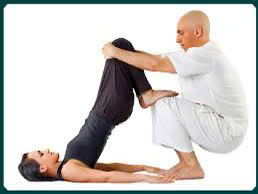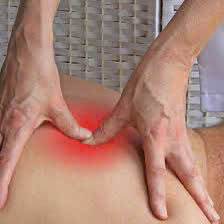How to Choose the Right Massage for Your Body to Relieve Pain, Reduce Stress & Improve Sleep
In our busy and often stressful world, the power of a good massage cannot be overstated. Whether you’re battling chronic pain, dealing with mental stress, or simply seeking better sleep, the right massage can be a transformative experience. It’s not just about relaxation—choosing the appropriate massage tailored to your specific needs can significantly improve your overall well-being. This comprehensive guide will help you understand various types of massage, their benefits, and considerations to help you make an informed choice for your body.

Understanding the Different Types of Massage and Their Benefits
When it comes to selecting a massage, understanding the options available is crucial. Each massage technique has unique characteristics, benefits, and ideal use cases—whether for pain relief, stress reduction, or sleep improvement. Exploring these options helps you personalize your experience and maximize outcomes.
It’s important to recognize that not all massages are equal—what works wonderfully for one person might not suit another. Factors such as your specific condition, preferences, and health status influence the ideal massage type. Having clarity about the differences empowers you to select a massage that aligns with your goals.
Swedish Massage: The Classic Relaxation Technique
The Swedish massage is often considered the foundation of many spa treatments. It involves long, gliding strokes, kneading, tapping, and circular movements on superficial layers of muscles. This technique aims to promote relaxation, improve circulation, and ease muscle tension.
Swedish massage is particularly effective in reducing stress and anxiety. Because it works on the superficial muscles, it provides immediate relaxation, alleviating mental fatigue and emotional strain. Moreover, the rhythmic strokes stimulate the nervous system, encouraging a sense of calm that extends beyond the session.
Encouragingly, regular Swedish massage sessions can help manage mild pain and stiffness, especially for those with sedentary jobs. The gentle, systematic approach also makes it ideal for individuals new to massage therapy or those who prefer a soothing, non-intrusive experience.

Deep Tissue Massage: Targeted Pain Management
Deep tissue massage employs slow strokes, deep finger pressure, and precise kneading to access the innermost layers of muscles and connective tissue. It’s designed to break down scar tissue, relieve chronic muscle pain, and improve mobility.
People dealing with persistent pain or muscle knots find deep tissue massage remarkably effective. It’s particularly beneficial for athletes, those recovering from injury, or individuals with conditions such as fibromyalgia. The intense pressure helps release tension stored in deep tissue layers and promote healing.
However, deep tissue massage can cause discomfort during the session, and some post-treatment soreness is common. It requires a skilled therapist with a good understanding of anatomy to avoid injury. For optimal results, it’s often recommended to combine deep tissue work with other techniques, depending on your specific needs.
Shiatsu Massage: Balancing Energy and Promoting Well-Being
Originating from Japan, Shiatsu massage involves applying finger pressure, palm strokes, and gentle stretching along specific points called meridians. The focus is on balancing the body’s energy flow (Qi) to foster healing and reduce stress.
Shiatsu is especially effective in relieving emotional stress, restoring energy balance, and promoting relaxation. Many practitioners believe that stimulating the body’s meridian points helps clear blockages, resulting in both mental and physical benefits. For those struggling with sleep issues linked to stress or mental fatigue, Shiatsu offers a holistic approach.
Furthermore, Shiatsu can help alleviate headaches, digestive issues, and fatigue, making it a versatile massage for overall wellness. Its gentle yet targeted approach is suitable for individuals who prefer a non-invasive, mindful therapy that supports physical and emotional harmony.

Thai Massage: Combining Stretching with Acupressure
Thai massage is a dynamic therapy that combines gentle compressions, deep stretches, and acupressure techniques. Usually performed on a mat on the floor, it often involves the therapist using their hands, elbows, knees, and feet.
This type of massage is highly beneficial for improving flexibility and releasing muscle tension. It’s especially suited for those with stiff joints, limited mobility, or chronic muscle tightness. The active stretching enhances circulation and encourages the release of endorphins, thereby reducing pain and stress.
Because Thai massage involves movement and stretching, it can also improve posture and range of motion. While it may be more vigorous than other manners of massage, the experience is energizing and rejuvenating, helping individuals feel revitalized and relaxed at the same time.
Factors to Consider When Choosing a Massage
Selecting the right massage involves several crucial considerations. Your personal health conditions, preferences, the specific problems you want to address, and your stress levels all influence the most suitable massage style. Having insight into these factors helps tailor your experience for optimal benefit.
Equally important is your communication with your therapist. Clear dialogue about your goals and any health issues ensures you receive the best possible care. Some massages may need to be modified based on your physical limitations or sensitivities, so being open about your needs is essential.
Here are key factors that can guide your decision:
- Goals (pain relief, relaxation, better sleep)
- Health status and existing medical conditions
- Preference for pressure level (gentle vs. intense)
- Experience level of the therapist
- Session duration and setting preferences
Health Conditions and Precautions
Certain health conditions require careful consideration before engaging in massage therapy. If you have cardiovascular issues, osteoporosis, skin infections, or are pregnant, some massage styles might not be appropriate or may require modifications.
For example, pregnant women should opt for pre-natal massage techniques that avoid certain pressure points or positions to ensure safety. People with blood clotting disorders or infections need to consult their healthcare provider before booking a massage.
Understanding these medical considerations ensures your therapeutic session supports your health rather than compromising it. Communicating your health background with your therapist is essential for a safe and effective massage experience.

Personal Preferences and Comfort
Your comfort and preferences significantly influence the effectiveness of a massage. If you prefer a gentle, relaxing treatment, Swedish or Shiatsu might be most suitable. Those seeking deep relief from chronic pain might lean toward deep tissue or Thai massage.
Choosing a therapist who respects your boundaries and communicates clearly enhances your sense of safety and relaxation. Some may prefer a quiet, meditative atmosphere, while others might enjoy a more energetic, movement-based session.
Finally, considering the session environment—such as temperature, music, and privacy—can elevate your overall experience. Remember, the massage is as much about personal comfort and trust as about technique.
How to Maximize the Benefits of Your Massage Experience
Getting the most out of your massage involves a combination of preparation, communication, and aftercare. The approach you take before and after the session can significantly influence the benefits, whether pain relief, stress reduction, or sleep improvement.
Your preparation might include arriving well-hydrated, avoiding heavy meals beforehand, and wearing comfortable clothing. Inform your therapist about your specific issues and any preferences or sensitivities.
Post-massage, hydration is key to flushing out toxins released during the session. Gentle stretching and relaxation help prolong the benefits, and avoiding strenuous activity immediately after can prevent setbacks.
Ultimately, consistency and openness to trying different techniques help you discover what works best. Incorporating massage into your holistic health routine can lead to sustained improvements in your quality of life.
Creating a Personal Massage Routine
Developing a regular massage schedule tailored to your needs ensures ongoing benefits. For chronic conditions, weekly or bi-weekly sessions are often recommended initially to observe significant improvements. For maintenance and stress relief, monthly sessions might suffice.
Different massage styles can be combined to address various issues. For example, a deep tissue session followed by Swedish relaxation might provide comprehensive relief. This approach allows you to target specific problems while enjoying overall relaxation.
Tracking your progress and noting how your body responds to different massage styles helps refine your choices. Over time, this personalized routine supports pain management, reduces stress, and enhances sleep quality.
Choosing the Right Therapist and Setting
The skills, experience, and demeanor of your massage therapist greatly influence your experience’s success. A reputable therapist should be licensed, trained, and attentive to your needs.
Interviewing potential therapists beforehand can help you gauge their expertise and approach. Don’t hesitate to ask about their experience with your specific issues or preferences.
A welcoming, comfortable environment also enhances your massage experience. Consider factors such as cleanliness, privacy, and ambient elements like music and lighting. Feeling at ease allows you to relax fully and experience the full benefits of the treatment.
Conclusion
Selecting the ideal for your body requires understanding various techniques, considering personal health and preferences, and maintaining open communication. Whether your goal is to relieve pain, reduce stress, or improve sleep, the right tailored to your needs can be a powerful tool for enhancing your well-being. Remember that consistency, proper preparation, and trusting a qualified therapist are key to maximizing the benefits. By investing in the right and approach, you can experience a profound transformation in your physical and mental health, enjoying a more balanced, relaxed, and healthier life.
Understanding Different Types of Techniques
When considering massage therapy, it’s crucial to understand the different types and techniques available. Each massage has its unique purpose, style, and degree of pressure. Understanding these distinctions will help you choose the kind of that aligns with your needs and preferences.
therapy isn’t a one-size-fits-all solution. Instead, it encompasses a wide variety of approaches, from gentle relaxation techniques to deep pressure therapies. By familiarizing yourself with these modalities, you can make informed decisions that enhance your overall well-being.
Swedish Massage
Swedish is one of the most well-known forms widely appreciated for its gentle techniques. It involves long, flowing strokes, kneading, and rhythmic tapping to promote relaxation.
The effects of Swedish are holistic, catering to both physical and emotional release. As the therapist works on your body, the strokes aid in the windfall release of tension, improving blood circulation and encouraging lymphatic drainage. This boosts the immune system, allowing you to fend off illness more effectively.
Typically, Swedish sessions last between 60 and 90 minutes, providing ample time for the therapist to address your needs comprehensively. Consider this type of if your primary goal is relaxation and stress relief. It serves as an ideal avenue to disconnect from daily stresses and find respite in a peaceful, serene environment.
Deep Tissue
In contrast, deep tissue takes a more intense approach, focusing on the deeper layers of muscle tissue and fascia. This style applies firm pressure and targeted techniques to release chronic muscle tension and alleviate pain.
The impact of deep tissue is profound due to its ability to address knots and adhesions often missed in lighter techniques. It’s particularly effective for individuals with chronic pain conditions or those who lead a physically demanding lifestyle.
It’s essential to communicate your comfort levels with the therapist during a deep tissue session since the intensity can sometimes surpass one’s pain threshold. While it may cause temporary discomfort, the resulting relief and improved mobility are well worth it. Without a doubt, those seeking solutions for chronic pain or physical limitations should consider adding deep tissue to their wellness routines.
Thai Massage
Thai is distinct, often described as a combination of yoga stretches and acupressure techniques. Practiced on a padded mat, it involves an interactive approach where the therapist assists the client in various yoga-like poses.
Unlike traditional where the recipient is passive, Thai engages both the therapist and the client, creating a dynamic and invigorating experience. This style enhances flexibility, improves energy flow, and harmonizes body and mind through its rhythmic movements and stretches.
Known for its ability to relieve stress and bolster vitality, Thai is beneficial for anyone looking to boost their physical well-being. As mentioned earlier, it maintains the essence of invigorating and rejuvenating experiences, making it the perfect option for individuals seeking both relaxation and physical movement.
The Importance of Open Communication with Your Therapist
Effective communication with your therapist is the cornerstone of a successful experience. Being open about your expectations, preferences, and any medical concerns can significantly enhance the benefits of your session.
Creating a trusting relationship with your therapist allows you to fully express your needs and desires, ensuring a more personalized treatment. By sharing your goals—whether it be pain relief, stress reduction, or improving sleep—you empower your therapist to tailor the session to suit your unique requirements.
Discussing Health Concerns
Before your begins, discussing any existing health conditions or concerns is essential. Conditions like high blood pressure, fibromyalgia, or recent surgeries may influence the type of you receive.
Your therapist can modify their techniques to ensure safety and comfort. This collaboration enables them to provide an effective experience while respecting your body’s limitations. Approach your therapist with confidence, and remember that entire objective is to promote your well-being.
Providing Feedback During the Session
During your session, offering feedback is equally fundamental. Whether it’s about the pressure level, specific areas of discomfort, or if you’re experiencing a sensation that feels off, your input is crucial.
A skilled therapist will constantly check in with you, but don’t hesitate to vocalize your feelings. Adjustments can be made in real-time to maximize your comfort and relaxation. This level of interactive communication demonstrates a proactive dedication to your therapeutic journey.
Post Discussion
After your session, a brief discussion with your therapist can prove beneficial. Sharing your thoughts on what worked well and any lingering issues can pave the way for future sessions that better cater to your needs.
Having a dialogue about your experience can provide your therapist with insights to refine their approach for your next appointment. This collaborative effort enhances not just your immediate therapy but also creates a roadmap for your ongoing wellness journey.
Enhancing the Massage Experience: The Role of Environment
The environment in which you receive your plays a significant role in your overall experience. Creating a calm, soothing atmosphere allows you to relax fully, making you receptive to the therapeutic benefits of the session.
From the choice of location to the ambiance, each element contributes to your comfort and satisfaction. This highlights the significance of not only the technique but also the surrounding environment when it comes to achieving relaxation and healing.
The Importance of Cleanliness and Comfort
When choosing a location, cleanliness should be a top priority. A well-maintained space not only reflects professionalism but also instills confidence in the treatment you’re about to receive.
The setup needs to be cozy and welcoming. Styling considerations such as soft lighting, comfortable temperature, and the availability of soothing music can set the tone for a rejuvenating experience. Feeling at ease in your environment allows for a more profound relaxation response during your session.
Impact of Ambiance on Relaxation
The ambiance surrounding your experience can significantly influence your mindset. Elements like calming scents, gentle music, and the quietness of your surroundings contribute to your overall sense of tranquillity.
Cozy, serene surroundings encourage you to leave daily stresses at the door and fully engage with the . Your mind can drift into a state of relaxation, allowing the therapist to work effectively on your body.
Personalizing Your Environment
Consider discussing your preferences with your therapist beforehand. Some people may appreciate the calming presence of nature sounds, while others prefer silence or soft instrumental music.
These personal touches can vastly improve your experience, allowing for a customized atmosphere that resonates with your sense of comfort. When you tailor the environment to match your needs, you create the perfect backdrop for your therapeutic journey.https://www.tiktok.com/@jobe.spa.massage?_t=ZS-8uucYtHwssr&_r=1
Conclusion
Understanding the variety of techniques and their respective benefits, alongside fostering open communication and ensuring a soothing environment, are key foundations for an enriching experience. By integrating these elements, you empower yourself to maximize the therapeutic benefits, whether you’re pursuing relaxation, pain relief, or greater mobility. As you embark on this healing journey, remember that both consistency and an open dialogue with your therapist will pave the way for lasting improvements in your physical and mental health. Ultimately, the care you take in choosing the right style, therapist, and environment significantly contributes to a healthier, happier you.https://jobedubaispa.com/massage-11/
